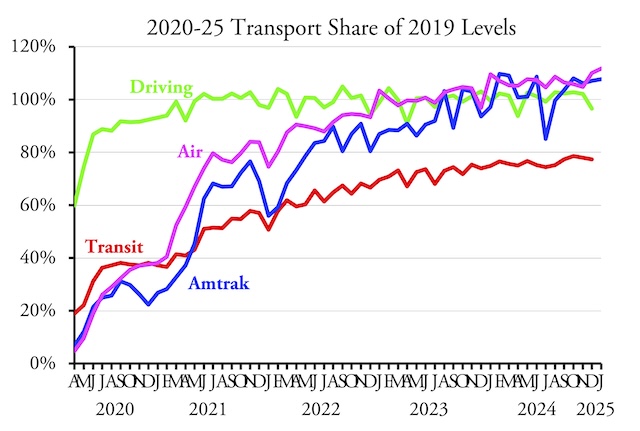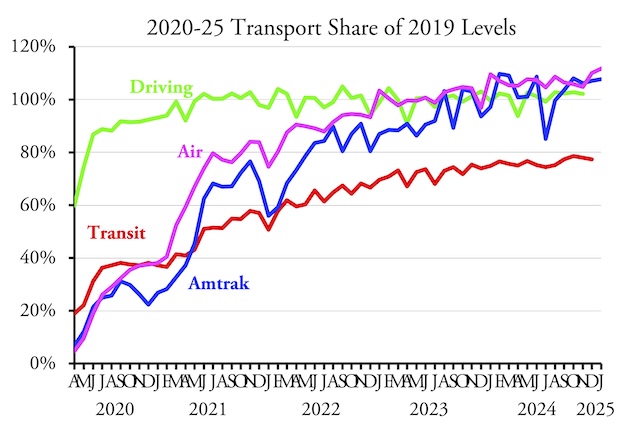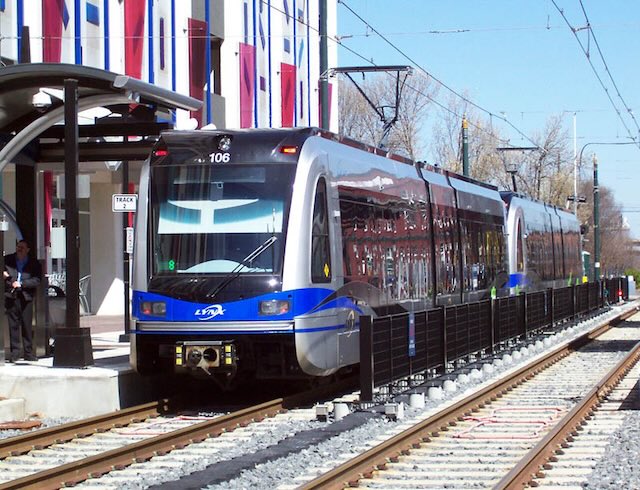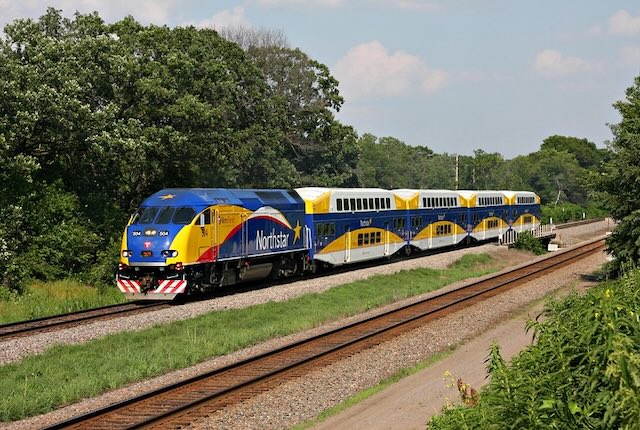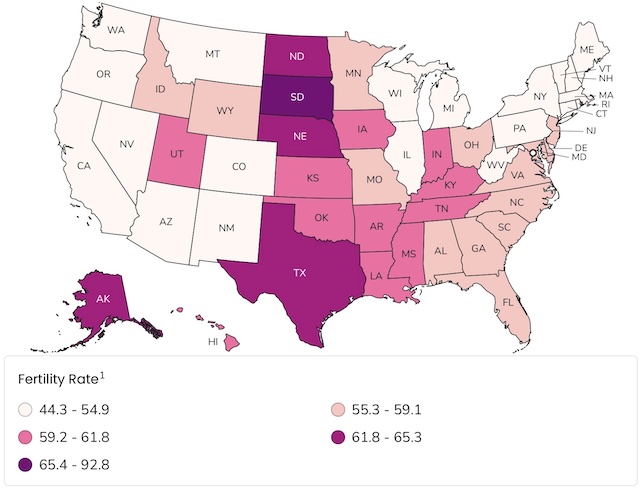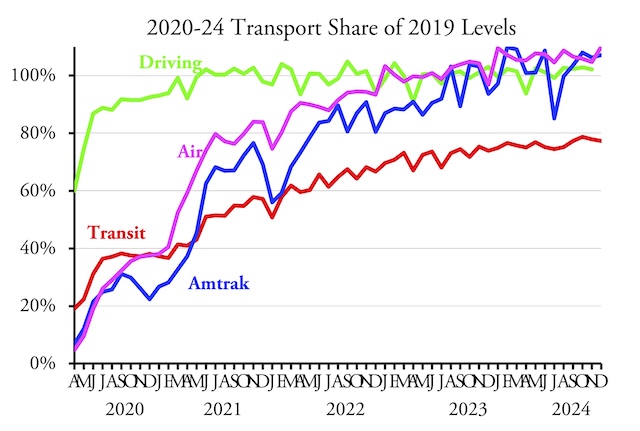I guess Musk didn’t fire everyone at the Federal Highway Administration, as the agency finally released its December traffic volume trends indicating that Americans drove 3.4 percent fewer miles in December of 2024 than the same month in 2019. Driving over the entire year of 2024 was 0.6 percent greater than in 2019.
This compares with transit, which carried 76.5 percent as many riders in 2024 as it did in 2019. Amtrak carried 2.8 percent more passenger-miles and the airlines carried 7.2 percent more passengers in 2024 as 2019. Continue reading

